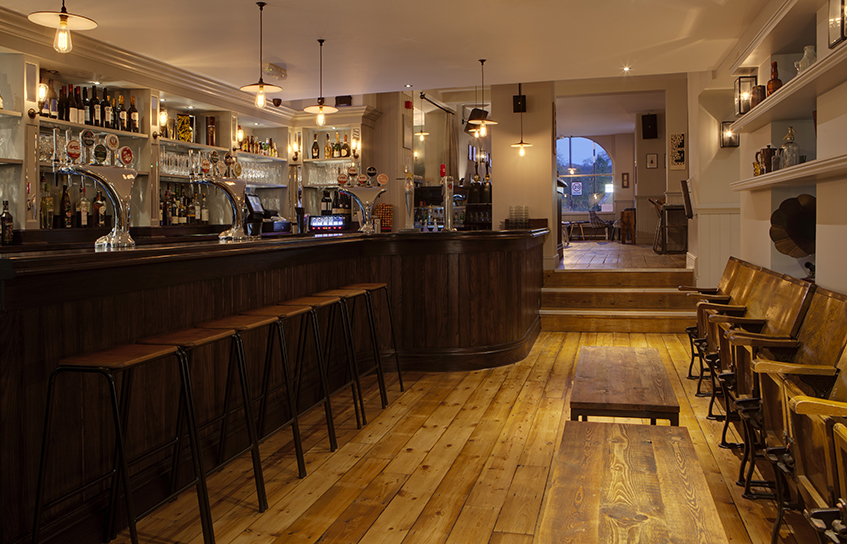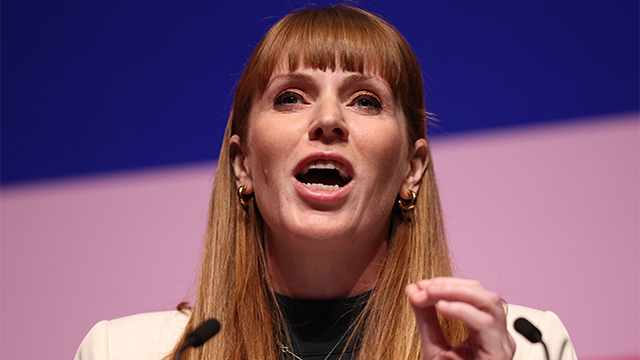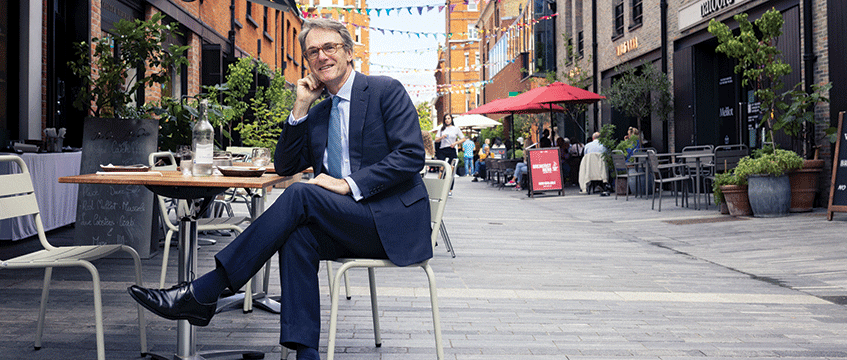Alton in Hampshire is a historic market town of 20,000 people. It has about 20 pubs, one for every 1,000 residents.
York, with a population just shy of 200,000, has around 200, the same ratio.
It sounds like a lot but then, once upon a time, popping down to the local watering holes was one of the only available options for community socialising.
Things have moved on considerably since then. We are spoilt for choice when it comes to how, where and when we socialise. Or, indeed, if we chose to do so at all, now that we live in a world where social media means staying connected doesn’t even require leaving the house.
This being the case, it makes sense that pubs do not feature heavily in new developments.
Urban & Civic’s Alconbury scheme in Cambridgeshire will have 5,000 homes but, for the moment at least, just one pub is planned. While at the former Olympic Village in Stratford, E20, one new bar supports thousands of flats.
Against the backdrop of the UK’s changing social habits and dwindling customer demand, how should developers successfully plan for pubs when they are creating new schemes? Or is it time to call last orders on this one-popular placemaking add-on?
Changing economics and trends
The evidence suggests that developers themselves like pubs and the social and community benefits they bring. “I’m a big fan of them in terms of regeneration,” says Karl Whiteman, executive director at Berkeley and the man behind the development of Kidbrooke Village in Greenwich.
“For me, whether a pub or food and beverage offering or a café is a community space, it provides a focal place, or focal point for the community.”
But the sad fact is they are becoming less popular with the consumer and, like the wider retail sector, they have become a victim of changing tastes.
Figures from the British Beer & Pub Association show 9,300 pubs have closed since 2002 – a reduction of 15%. That’s 14 closures a week.
In part, this is because the UK market was saturated – or soused. But it’s also due to a changing pattern in alcohol consumption. Despite the headlines, Binge Britain is declining. And when we do overdo it, we now tend to do it at home.
“As a society, we view pubs and bars with rose-tinted spectacles,” says Iain Painting, partner at Barton Wilmore. “If you got 100 people in a room and said: ‘Tell us about a pub’, they would say: ‘They’re fantastic.’ But when you ask them how often they go, it would not be often enough to keep them viable.”
Part of this is due to a growing abstemiousness in the UK population, part of it is due to changing youth habits. Perhaps most importantly is the cost of alcohol, and the fact more people drink at home and young people are less inclined to go out thanks to the rise of dating apps.
Why bother going out when you can get a date at home from your iPhone? Millennials are also more health-conscious than previous generations and if they do go out they drink less. A 2016 survey by Heineken found that on a night out, 75% of millennials will opt to drink in moderation.
A new opportunity
But while there is less demand for pubs, this does not mean they are dead in the water. It is just about getting the right product.
“Ten years ago we all said digital TVs would be the death of the cinema but, actually, it’s buoyant now,” says Carter Jonas’s national retail and town centre consultancy head Steve Norris. “We as human beings are social animals. So what you need is the product.”
Where there is demand in large schemes, it is focused towards eating as well as drinking – tapping into the gastropub demand. The advent of microbreweries and craft beer is giving fresh life to the alcoholic product, too.
As well as reducing antisocial behaviour, it has the advantage of bringing planners onside.
Julian Jennings, partner in Gerald Eve’s leisure team, says because the new offers are food-driven, there is often no resistance at all.
“The opposition is more towards wet-led drinking establishments in town centres. Councils are more and more pub-friendly in terms of planners. There is more concern about pubs being closed.”
Painting believes there is room for a new asset type, which runs from coffee from 7am and beer until 11pm, tapping into a continuous stream of demand and appealing to all the different demographics.
“It’s about broadening the appeal to an all-day use” says Painting. “But who are those operators? Are the breweries there yet, I don’t think so, nor is Starbucks.”
Some of the big operators are starting to look into capturing the all-day customer. Wetherspoon’s serves coffee from 8am, while Pret A Manger is experimenting with licensed premises.
But for that French-style café, where you go for your croissant in the morning and beer in the evening, there remains a gap – one that could easily be filled by independent operators.
“There is a gap for new small operators to come in,” says Painting. “If it is the case, how does the property market respond to that?”
Pubs for social cohesion
From a planning and development perspective, there are still those who argue that the right sort of pubs remain key components of any new community.
Berkeley’s Whiteman points out that while management is important, the ability of modern operators to integrate themselves into the community and take their social responsibilities seriously is excellent.
As such, they are able to sit as one tool in the wider placemaking repertoire. First comes schools and convenience retail, then comes the food and leisure offering, which includes pubs. All of this is part of the slow but steady realisation among developers that ground-floor retails and leisure is important.
John Kinsey, national director of hotels and hospitality at JLL, says there is a growing view that having that community facility can help with sales.
“Not with prices but with sales, because there is a facility for people to meet in. More and more they are being looked as something that can improve an area.”
Adding value
So while pubs may be less financially viable than they once were, housebuilders and developers are increasingly switched on to the placemaking offer, and can allow them cheaper rents for community benefits.
There is even a growing trend to let ground-floor space at a discount to attract buyers for flats above and houses around.
As the PRS comes more and more into play, and ground-floor offerings have a direct impact on rents upstairs, this will become even more critical.
There is no set ratio for pubs to people in new housing developments, and much depends on the area, the demographic and other amenities.
While pubs may be in decline, the nation still likes a tipple, so the responsibility falls on developers to find what is most wanted in their schemes.
Developments with pubs
Goodman’s Fields, Berkeley, London
Berkeley opted for two pubs at its 1,050-home Goodman’s Field scheme, which sits between east London and the City.
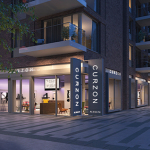
“From our perspective, we think they are very positive – it’s a lovely place for residents to be able to socialise and meet each other – it’s a good opportunity to meet your neighbours,” says Piers Clanford, Berkeley Homes’ managing director.
He says it went back in and revised the planning to incorporate a more mixed-use element. However, he said it was important to plan properly to guard against noise and antisocial behaviour.
“It’s a very real concern and something you need to address early on: you need to make sure you have designed your concrete slab between commercial and residential so it does not transmit noise.
“It needs to be written in the lease that people are not outside after 10.30pm. Planning it right from the outset is key.”
Quintain, Wembley
At Wembley, Quintain has very different priorities for its 7,000 homes.
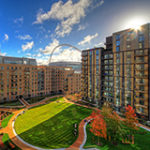
While it had to decide how to keep residents happy and create a heart in what essentially amounts to a new town, it also had to take into account how crowds from the stadium would fit into this.
“One of the challenges that Wembley has is the stadium and arenas bringing in huge influxes of people” says Matt Slade, Quintain’s director of commercial operations.
“There is going to be two speeds of areas – more intimate spaces and then much bigger event destination areas.”
As a result, there has had to be a lot more planning and consideration put into the location and type of offer, while operators have to be chosen to ensure they can scale-up on match day. There are considerable extra hoops to jump through for licensing.
The decision to build the homes for the rental market means it has to get the offering right to keep attracting tenants: rowdy pubs would drive people away, so too would an area with no character and amenities.
“We don’t just take a 15-year lease on a pub and leave them be, we will be close to their business and hands-on supportive, linking them to the community,” says Slade.
“Being fleet of foot is key. Over the whole of our business, we have this unique insight if the rental residential model shifts very subtly, we can respond appropriately.”
To send feedback, e-mail alex.peace@egi.co.uk or tweet @egalexpeace or @estatesgazette







